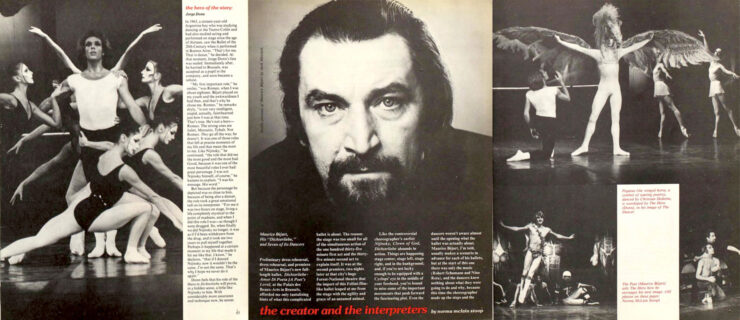John Jasperse Company
Next Wave Festival
BAM Harvey Theater
Brooklyn Academy of Music, NYC
November 16–19, 2011
Performance reviewed: Nov. 17
The BAM Harvey Theater is far from the most daunting of performance spaces, especially compared to BAM’s Gilman Opera House. And yet, every now and then, a production will test its mettle within the Harvey’s studiously funky environs and come up short.
For the New York premiere of Canyon, John Jasperse’s Next Wave commission, visual designer Tony Orrico approaches the back wall, stage floor, audience area, aisles, staircases, lobby, and even the restrooms with rolls of fluorescent tape in hand. Hard to tell if Orrico wants to subdue or merely decorate the building’s expanse but—with the designer hidden inside a white cube that awkwardly creeps along the floor dispensing tape like slug slime–it all ends up looking meaningless. It’s a little like shooting silly string into the Grand Canyon.
Oh, wait. Could that be the point? My first view of the Grand Canyon instantly silenced me—less out of awe than awareness that comment of any kind would be banal. Perhaps Orrico and Jasperse want us to think of dance as a humble, transitory act in the world. Even Jasperse’s choreography for Canyon seems to issue from an aerosol can, like the children’s toy. When everything’s done, you could just roll it back into a ball—as dancers will eventually strip and roll up Orrico’s tape—and tuck it away in some corner.
Canyon
’s opening sequence gives the impression, though, that dance is essential, the substance of life itself. Dancers—Lindsay Clark, Erin Cornell, Kennis Hawkins, Burr Johnson, James McGinn, Jasperse himself—pop into the space, breeze in and out, prance and fan past one another with so much buoyancy, so much breath, in their bodies. (Johnson’s remarkably tensile performance, in particular, goes from strength to strength as the piece unfolds.) Hahn Rowe’s band, stashed in a corner, evokes a world of railroad trains compressed into one chiming howl. Taken together with the windswept dancing, this initial passage of music establishes a sense of spacious, vibrant landscape.
The 70-minute ensemble work suddenly pulls back from this intensity and drops us into movement that, in spatial and sonic context, seems less sure of itself. (For a time, Hahn’s score gets less interesting, too.) I noticed that I could look aside for a few moments and then return with no feeling of loss. With few exceptions—one being a charming quartet of hands that rose behind the floor mat’s rim, making goose-necked shapes—Jasperse’s material spooled out like Orrico’s tape, unassuming, all too similar, and only lacking the garishness of color, which might have been welcome.
I haven’t yet mentioned the little orange flags on tall, thin poles that mark a section of the floor. In the opening sequence, one flagpole rises from the back of McGinn’s shirt, bobbing back and forth as he skitters about. They are, perhaps, the sort of flags that keep sprawling tour groups in line with their leaders. Near the end of Canyon, dancers quietly remove these flagpoles and place them behind the floor mat’s rim. Done, filed away, a simple procedure.
Photos of John Jasperse’s
Canyon by Julieta Cervantes, Courtesy BAM. Top to bottom: Erin Cornell, Kennis Hawkins, and Lindsay Clark; Burr Johnson and Erin Cornell; John Jasperse.



